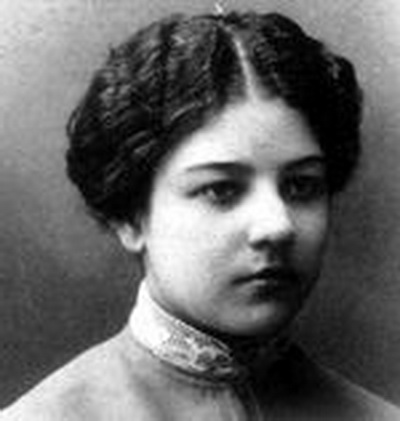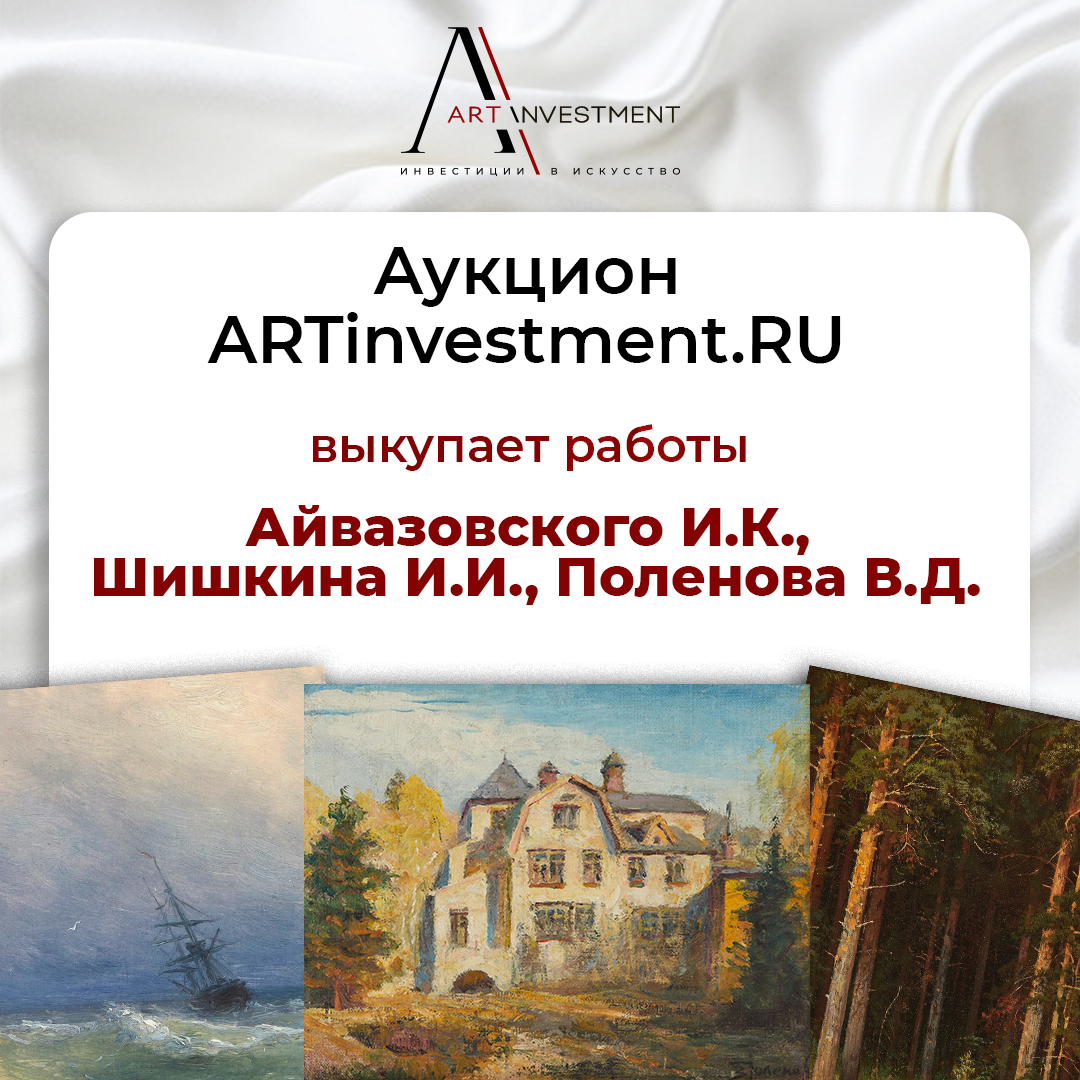Art Investment
Rozanova Olga Vladimirovna
1886–1918
ТВОРЧЕСКИЕ ОБЪЕДИНЕНИЯ
БИОГРАФИЯ

ROZANOVA Olga Vladimirovna
Painter, graphic artist
Olga Rozanova was the daughter of a civil servant. She was the youngest of three children. At the age of ten she moved to Vladimir with her family and entered a woman’s gymnasia. After the graduation she moved to Moscow and lodged on the 3rd Tverskaya-Yamskaya Street. She began her studies at A. P. Bolshakov’s School of Painting and Sculpture on Myasnitskaya Street. From 1907 to 1910 she attended the Stroganov School of Industrial Art and the K. F. Yuon and I. O. Dudin School of Painting and Drawing as a noncredit student. She spent her summer holidays at her parents’ home in Vladimir. She also visited St. Petersburg, where she met several major figures of the Russian avant-garde: artist and composer Mikhail Matyshin, artist and writer Elena Guro and poets Velimir Khlebnikov and Aleksey Kruchenykh. Rozanova started to frequent the meetings of the Union of Youth. She went on to become the Union’s permanent member and since 1910 she always showed her works at its exhibitions.
In 1911 Rozanova moved to St. Petersburg and started studying at Elizaveta Zvantseva’s school of painting and drawing. In 1913 she created the illustrations for the Futurist anthology Rykayushchiy Parnas (“Roaring Parnassus”) and a poster for the opera Victory over the Sun. A year later she met F. T. Marinetti, the leader of Italian Futurists. He visited St. Petersburg and invited Rozanova to participate in the International Futurist Exhibition in Rome that same year. For that exhibition she sent four paintings and two illustrated books. She also worked on illustrations for books by Kruchenykh Chort i Rechetvortsi (“The Devil and the Speechmakers”) and Stikhi Mayakovskogo. Vypyt (“The Poetry by V. Mayakovsky. Extort”). In 1914 Rozanova took part in an exhibition called Women Artists for the Victims of War, where she first showed her applied art. In 1915 and 1916 she participated in Tramwai V and 0,10 exhibitions in Petrograd. She also finished Voina (“War”), an album of linocuts featuring poems by Kruchenykh. Rozanova was also invited to join the Bubnovy Valet (“Jack of Diamonds”) artistic society. She took part in its exhibitions in 1916 and 1917.
In November 1916 Rozanova moved to Moscow. She and Kruchenykh publushed experimental poetry books Balos and Nestrochie. In 1917 Rozanova was one of the founders of the Supremus society. She was elected secretary of the society and the editorial board of the eponymous magazine.
In 1918 Rozanova worked on Moscow street decorations for the 1st of May (Labourers’ Day). She also participated in the first exhibition of the Professional Union of Moscow painters. She also set up an industrial section at the Department of Fine Arts of the National commissariat of education (Narkompros). She was elected head of the training workshop of the First State Free Art Studios. She also designed banners and slogans for the anniversary of the October Revolution.
In November 1918 Olga Rozanova died of diphtheria in the Soldatenkovskaya hospital.
Rozanova’s works were shown at many exhibitions of Russian art in Russia and other countries, including the First Russian Art Exhibition at the Van Diemen gallery (Berlin, 1922) and such exhibitions as the Contemporary Russian Art at the Museum of Modern Art (New York, 1925), the Fifteen Years of Left-Wing Art at the Museum of Painting Culture (Moscow, 1927), the Paris — Moscow at the Pompidou Center (Paris, 1979) and The Amazons of Russian Avant-garde in the State Tretyakov Gallery (Moscow, 2000). Retrospectives of Rozanova’s work were organized at the Exhibition hall of the Union of Artists in Moscow (1991), the State Russian Museum in St. Petersburg and Helsinki City Art Museum (both in 1992).
Olga Rozanova’s life was tragically short — she devoted only 8 years to art. But those years were extremely productive: from 1911 to 1914 she worked for the Union of Youth, in 1916 and 1917 she was member of the Bubnovy Valet (“Jack of Diamonds”) society and in 1917 and 1918 she was a Supremus member. Her work is inextricably linked to the history of the early Russian avant-garde — from its beginnings as an underground movement within the Moscow and St. Petersburg artistic circles to its attempts to become official art that supported the Bolshevik government. She contributed to the development of almost all the artistic ideas that were in vogue in the 1910s in Russia — Cubism, Futurism, Primitivism and Suprematism.
Just like many of her contemporaries, Rozanova worked in a variety of fields: easel painting, graphic arts, book illustration and applied arts.
Works by Olga Rozanova can be seen in many museums, including the State Russian Museum in St. Petersburg and the State Tretyakov Gallery in Moscow.
Новости - Hot news
Открыты 478-е торги AI Аукциона
01.05.2023Неизвестный известный Серж Иванов. 1893–1983
06.03.2023Открыты 469-е торги AI Аукциона
27.02.2023Открыты 429-е торги AI Аукциона
12.05.2022The king walks in any weather. Personal exhibition of artist Andrew Munz AI in the gallery "XXI century. Contemporary Russian art"
17.08.2020A common story: Artsy. Part 1
13.08.2020Open 342-е the Auction and 28-й curator's auction "XXI century"
11.08.2020Artist of the week: Leonid Purygin
10.08.2020Cross-trades in the summer of 2020. ArtTactic Report
06.08.2020Услуги ARTinvestment
Арт-консалтинг
Индивидуальные консультации от опытных искусствоведов по любым вопросам в сфере искусства
Составление Инвестиционного Портфеля
Подбор предметов искусства для инвестирования под любую инвестиционную стратегию
Индивидуальная оценка
Наши эксперты проведут профессиональную оценку вашего предмета искусства, учитывая его состояние, авторство, историю и другие факторы
Проведенных аукционов
Зарегистрированных пользователей на аукционе
Записей в базе
Художников в базе

